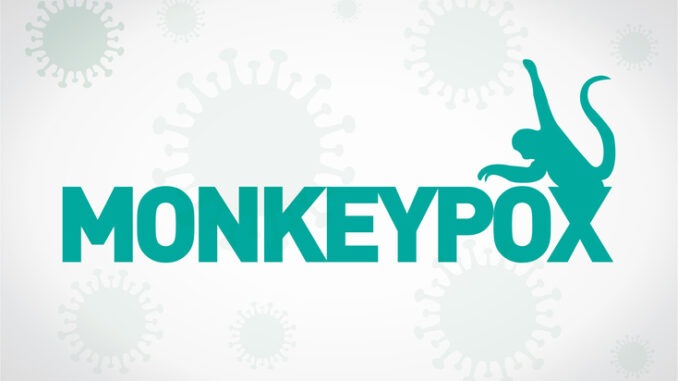
As the spread of monkeypox starts to slow, what do researchers believe are the possible reasons for this, and what should future preventative responses prioritise?
CREDIT: This is an edited version of an article that originally appeared on BMA
After a surge of monkeypox infections starting in May 2022, with more than 70,000 cases globally – including 99% from countries without previous known endemic spread – by the end of August 2022 new infections started to trend downward. Whether this marks the end of the outbreak or whether intermittent surges will continue is not yet clear. Understanding the underlying transmission dynamics is key to shedding light on this, as well as to informing future interventions.
In a recent paper, Thomas Ward, head of infectious disease modelling at the UK Health Security Agency, and colleagues used routine case questionnaires and contact tracing data to estimate two important characteristics of the monkeypox outbreak in the UK – the serial interval and incubation period. They found that shorter serial intervals are more common than shorter incubation periods. One explanation the authors provided is that considerable transmission is occurring before the appearance or detection of symptoms – otherwise, the serial interval should, at a minimum, equal the incubation period.
This study had a relatively large sample size and appropriate statistical adjustments to account for key biases in the data. The researchers used paired case-contact data to validate their model-based conclusions. One limitation was the use of patient-reported variables, with the potential for recall and response biases, which is particularly critical for the date of symptom onset. For example, people who have been contact traced, or reached by public health messages, will be more aware of potential symptoms and, therefore, may well be more vigilant. If infected individuals notice symptoms sooner than those who infected them, the serial interval and, therefore, the comparison with the incubation period, could be biased. Contact tracing, with individuals self-reporting exposure events, is used to link people who infect others, and those who become infected, and could also be a source of bias – for example, in the case of monkeypox infection, after a super-spreading event where the index case was not identified, the serial interval could be underestimated.
Other studies have also hinted at pre-symptomatic transmission. Anal swabs collected from 213 asymptomatic men who have sex with other men were retrospectively screened for monkeypox virus; 13 tested positive on polymerase chain reaction (PCR) and two subsequently developed symptoms. Although a positive PCR test result does not necessarily indicate that an individual is infectious, this study raised questions about transmission being dependent on symptoms.
Evidence supporting pre-symptomatic transmission is not definitive, but if Ward and colleagues’ findings are supported by those of other studies, then pre-symptomatic transmission, or transmission before symptoms are detected, would have important implications for infection control globally. Specifically, postexposure, or ‘ring’ vaccination of contacts identified only through individuals with symptoms, could be inadequate. In the US and UK, vaccination campaigns have already shifted from exclusively postexposure prophylaxis to include pre-exposure prophylaxis for some high risk groups.
Vaccine equity
Equitable access to vaccines is critical to monkeypox control efforts globally, and lack of access is a serious concern, particularly if pre-symptomatic transmission is occurring. Currently, Jynneos (also known as Imvanex) which is in limited supply, is the primary vaccine in use for monkeypox in the US, Canada, Europe and the UK; the older smallpox vaccine ACAM2000 is less commonly used, and only in select patients.
From the patient perspective, monkeypox infection can be extremely painful and isolating, greatly affecting psychological wellbeing. High risk communities are keen to access vaccination, as evidenced by long vaccination queues. Ensuring that effective vaccines are available to all communities and individuals at risk should be a priority for health leaders in affected countries, and for global health leaders more broadly.
From a health system perspective, vaccination is likely to be more cost-effective than managing the consequences of preventable infections, including hospital admissions, loss of income during isolation, and long term complications; these costs put extra pressure on health systems in low income countries that already have a high burden of infectious diseases.
Public health measures that have been critical during monkeypox outbreaks in high income countries, such as PCR testing and vaccination, remain unavailable in much of Africa. In their study, Ward and colleagues relied on resource-intensive contact tracing and case questionnaires – approaches important to a context-specific public health response, but under-supported in low resource countries where monkeypox is endemic.
As the monkeypox outbreak declines in Europe and North America, we have a responsibility to deploy effective tools for viral control on a global level – not just in wealthy nations. These tools include research into understanding transmission dynamics in African settings, and the inclusion of endemic countries in vaccine trials.


Be the first to comment